Coaching is gaining its ground. It’s not coming ... IT'S HERE!
The biggest challenge training has always had is proving our worth, our ROI, our value to the organization. Is and was there value? ... Yes! But here is the toughest thing to share - and quite frankly the truth. Training leaders and trainers for far too long have had to prove their value beyond the classroom and into the workplace.
Fair? Tough? Opportunity? Yes! Yes! Yes!
Here is the GREAT NEWS! Coaching allows us to get into the department and REALLY extend the training value way beyond the classroom. Here are some hints:
1. Engagement - this is the area everyone is talking about. Conduct an engagement study asking employees their levels of engagement. You will be surprised to find out that many of your employees are not fully engaged or committed to the company. In fact, according to the Gallup Organization, 70% of employees are either not engaged or actively disengaged which leaves only 30% engaged. We know that engaged employees are more valuable to a company than disengaged employees, but what is the real cost of disengaged employees? The Gallup’s latest research found that actively disengaged employees cost the American economy up to $350 billion per year in lost productivity. Breaking this down per employee means that a disengaged employee costs an organization approximately $3,400 for every $10,000 of salary. Disengaged employees return 60% of their salary in value, somewhat disengaged employees return 80% but fully engaged employees return 120% of their salary in value.
2. Performance - Coaching can deliver a team focus to the manager-subordinate relationship and foster a deeper relationship between the individuals. Coaching versus managing is a natural relationship building strategy that will drive an increase in performance. Coaching involves asking questions and listening where managing is telling. Coaches are people makers when managers are number makers. Coaching is a proactive strategy whereas managers are re-active. Coaching is a development process while managing is a “maintain the status” process.
Coaching can be crafted to address many areas where management sees a need for development. It can be skill, knowledge or behaviorally driven. When a coaching engagement is working there is progress to a specific goal, and a sense of achievement on the part of the coached and the coach. The progress is an opportunity for both to step back and realize a sense of accomplishment. It directly affects the feeling of making a difference/amount of meaningful work value. Employees with a greater sense of accomplishment at work are better performing employees.
3. Retain Employees - Measure the levels of employees retained from one year to the next department by department. This measurement encompasses both voluntary and involuntary turnover, but what may surprise you is the voluntary rate. The turnover levels can vary depending on what industry, occupation and region you are in. However, one thing seems to stay constant as the number one reason for an employee’s departure - their boss. Aside from the main reason for an employee leaving an organization, there is a significant cost both directly and indirectly associated with replacing employees. The Center for American Process shows the average costs to replace an employee are: 16% of annual salary for low-paying jobs (under $30,000 a year), 20% of salary for mid-level positions ($30,000 to $50,000) and up to 213% of salary for higher-level executive positions
4. Recruit Employees - This area is a little nebulous, but our ability to recruit through brand and employee involvement can actually decrease recruiting costs such as using agencies and posting ads. Measure the costs year after year in regard to recruitment. If the number goes down, the value of training & coaching goes through the roof and is recognized by upper level management. If companies are engaged with their employees and they are driving their performance, the employees are more likely to stay. Thus, they are indirectly helping to reduce the need to replace them. Secondly, they are more likely to promote the company and its positive environment to others. This “word of mouth” advertising is better than any job board, recruiter or social media can advertise. According to the Wall Street Journal, the cost to hire a replacement (including advertising, interviewing and screening) averages $2,000-$3,700 per employee.
5. Culture of Participation - Conduct surveys of work habits and levels of agreement within departments, as well as across departments. Coaching not only drives engagement, but provides the ability for teams to work together. According to a Gallup study, highly-engaged companies improved more than 19% while non-highly-engaged companies fell 32%. Measuring this level of participation is invaluable to an organization. Lack of communication and disconnect between management, employees and departments leads to disgruntled workers, poor performance/production, accidents and ultimately a failing company. The participation must exist from top to bottom. A 2011 study by Brighter Planet found that engagement programs in which employees were the main sustainability advocates were only half as likely to be effective as those in which management or the board of directors was the main sustainability advocate. Yet ironically, many workers doubt the ability of their leaders to drive accountability and make the workplace run smoothly. Per a 2012 Global Workforce Study, 43% believe that individual employees, not their leaders, have the biggest impact on their company’s culture. These contrasting studies appear to point to the fact that the culture of participation must exist from top to bottom.
Pick your shots carefully; but when we combine training with coaching along with management participation, the value for all goes up!




